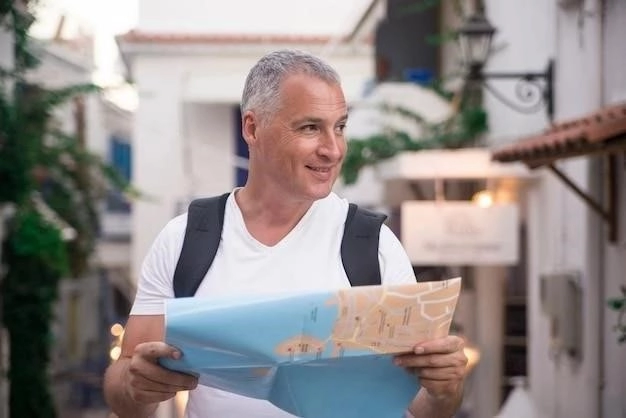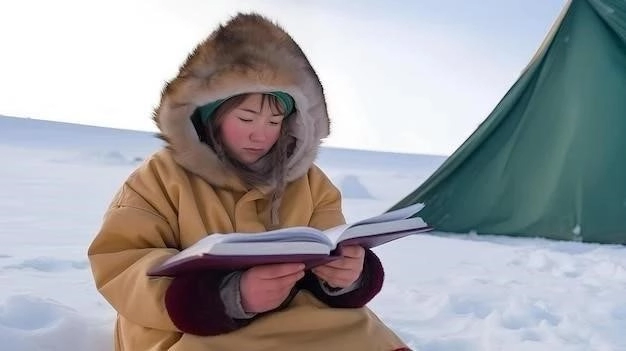Nestled in the heart of Central America, Guatemala beckons with ancient Mayan ruins, captivating colonial cities, and stunning natural beauty. From the vibrant markets of Chichicastenango to the awe-inspiring Tikal National Park, a journey through Guatemala is a captivating blend of history, culture, and adventure.
Planning Your Trip
Embarking on a journey to Guatemala requires careful planning to ensure a seamless and enriching experience. Here are key aspects to consider:
Guatemala’s climate varies significantly by altitude, so the ideal time to visit depends on your preferred activities and destinations. The dry season (November to April) offers pleasant weather for exploring Mayan ruins and hiking, while the wet season (May to October) brings lush landscapes and fewer crowds.
Duration of Stay
To truly appreciate Guatemala’s diverse offerings, a trip of at least 7-10 days is recommended. This allows ample time to immerse in the cultural tapestry of Antigua, delve into the Mayan world at Tikal, and perhaps even venture to the serene Lake Atitlán.
Guatemala caters to a range of budgets. Accommodation, transportation, and dining options vary in price, allowing for both luxurious and budget-conscious experiences. It’s advisable to research and establish a budget that aligns with your travel style.

Transportation
Navigating Guatemala is possible through various means, including domestic flights, comfortable tourist shuttles, public buses (known as “chicken buses” for their vibrant decorations), and rental cars. The choice depends on your itinerary and comfort level.
Consult your healthcare provider regarding necessary vaccinations and health precautions. Travel insurance is highly recommended for unforeseen circumstances. Stay informed about safety guidelines and exercise caution in urban areas.
Best Time to Visit
Guatemala, with its diverse landscapes and microclimates, offers unique experiences throughout the year. The optimal time to visit depends largely on your interests and priorities:
Dry Season (November – April)
This peak season boasts sunshine, clear skies, and minimal rainfall, making it ideal for exploring ancient ruins, hiking volcanic trails, and enjoying outdoor activities. However, expect higher prices and increased tourist crowds, especially during holidays.
While afternoon showers are common, the wet season transforms Guatemala into a verdant paradise. Lush rainforests, cascading waterfalls, and lower prices offer a different perspective. This period is perfect for those seeking tranquility and a more immersive cultural experience.
Shoulder Seasons (April – May & September – October)
The shoulder seasons offer a balance of pleasant weather and moderate crowds. You might encounter occasional showers, but they are often brief and followed by clear skies. This is an excellent time to find deals on accommodations and tours.
Consider Guatemala’s vibrant festivals when planning your trip. Semana Santa (Holy Week) is a spectacle of colorful processions, while Día de los Muertos (Day of the Dead) offers a poignant glimpse into local traditions. Researching festival dates can enhance your cultural immersion.

Visas and Entry Requirements
To ensure a smooth entry into Guatemala, it’s essential to understand the visa regulations and customs procedures. The following information pertains to citizens of most countries, but it’s always advisable to verify with the Guatemalan embassy or consulate in your home country for the most up-to-date requirements:
Tourist Visa
Citizens of many countries, including the United States, Canada, and most European Union nations, can enter Guatemala for tourism purposes without a visa for up to 90 days. Upon arrival, you’ll receive a tourist stamp in your passport. It’s crucial to ensure your passport is valid for at least six months beyond your intended stay.
Guatemala is part of the CA-4 agreement, which allows for free movement of citizens between Guatemala, Honduras, El Salvador, and Nicaragua. If you’re planning to visit these neighboring countries, you can enter and exit on a single tourist visa granted by the first CA-4 country you visit.
Extensions and Visas on Arrival
If you wish to extend your stay beyond the initial 90 days, it’s possible to apply for an extension at the immigration office in Guatemala City. In some cases, visas may be obtainable upon arrival for a fee, but it’s recommended to secure the necessary visa in advance to avoid any complications.
Getting to Guatemala
Guatemala is well-connected to the rest of the world through its international airport and various overland border crossings, offering flexibility for travelers. Here’s a guide to navigating your arrival:
The primary gateway to Guatemala is La Aurora International Airport (GUA), located in Guatemala City. Numerous major airlines operate direct flights to and from North America, Central America, and Europe. Upon arrival, taxis and pre-booked shuttles are readily available for transportation to your chosen destination.
Overland Travel
Guatemala shares borders with Mexico, Belize, Honduras, and El Salvador, making overland travel a popular option for exploring the region. Border crossings typically involve immigration and customs checks. It’s essential to have your passport, visa (if required), and any relevant vehicle documentation in order.
Comfortable tourist shuttles operate between major cities in Guatemala and neighboring countries, offering a convenient and scenic way to travel. Alternatively, public buses are a budget-friendly option, albeit with longer travel times. Renting a car is also possible for greater flexibility, but road conditions can vary.
Getting Around Guatemala
Navigating Guatemala’s diverse landscapes is an adventure in itself, with various transportation options to suit different preferences and budgets. Here’s a comprehensive guide to traversing this captivating country:
Tourist Shuttles
For safe, comfortable, and efficient travel between major tourist destinations, tourist shuttles are a popular choice. These pre-booked vans operate on fixed routes, connecting cities like Antigua, Lake Atitlán, Flores (Tikal), and Lanquín (Semuc Champey). They offer door-to-door service, often with air-conditioning and experienced drivers.

Guatemala’s “chicken buses,” retired school buses adorned with vibrant colors and intricate designs, are a cultural experience in themselves. They offer an inexpensive way to explore the country, albeit with less comfort and predictability than tourist shuttles. Be prepared for crowded conditions and frequent stops.
Domestic Flights
For longer distances or to save time, domestic flights are available between major cities. This is a particularly convenient option for reaching destinations like Flores (Tikal) or Puerto Barrios (for Lívingston or Río Dulce).

Accommodation
Guatemala offers a diverse range of accommodation options to suit every taste and budget, from charming colonial-era hotels to eco-friendly lodges nestled in nature. Whether you seek luxurious indulgence or authentic local experiences, you’ll find a welcoming place to rest and recharge during your travels.
In cities like Antigua and Guatemala City, boutique hotels abound, housed in beautifully restored colonial buildings. These intimate establishments often feature courtyards, rooftop terraces, and personalized service, offering a taste of Guatemalan history and elegance.
Eco-Lodges and Nature Retreats
For those seeking tranquility and immersion in nature, eco-lodges and nature retreats are idyllic choices. Nestled near lakes, volcanoes, or within the rainforest, these properties prioritize sustainability and offer opportunities to connect with the environment.
Budget-conscious travelers and backpackers will find a wide selection of hostels in major tourist hubs. These social accommodations offer dormitory-style rooms or private options, often with communal kitchens, common areas, and organized tours and activities.
Home Stays
For a truly immersive cultural experience, consider a home stay with a local family. This provides an opportunity to interact with Guatemalans, learn about their customs, and savor home-cooked meals. Home stays are available in various communities, offering insights into local life.
Food and Drink
Guatemalan cuisine is a delightful fusion of Mayan traditions and Spanish influences, resulting in a vibrant tapestry of flavors and textures. From hearty stews to delicate tamales, a culinary journey through Guatemala is a feast for the senses.
Indulge in savory Pepián, a rich chicken stew simmered in a blend of spices, nuts, and seeds. Savor the comforting flavors of Kak’ik, a traditional turkey soup with achiote and cilantro. For a quick and delicious bite, try Tamales, steamed corn dough filled with various meats, cheeses, or vegetables.
Street Food Delights
Embrace the lively street food scene and sample local favorites. Relish the crispy goodness of Tostadas, fried corn tortillas piled high with toppings like guacamole, beans, and salsa. Treat yourself to Elotes, grilled corn on the cob slathered with mayonnaise, cheese, and chili powder.
Quench your thirst with refreshing beverages like Agua de Tamarindo, a sweet and tangy tamarind drink, or Horchata, a creamy rice milk drink with cinnamon. For a caffeine kick, try Guatemalan coffee, renowned for its rich flavor and aroma.

Things to Do in Guatemala
Guatemala offers an abundance of enriching experiences for every type of traveler. From exploring ancient Mayan cities to immersing oneself in vibrant indigenous cultures, the country’s diverse landscapes provide a captivating backdrop for adventure and discovery.
Unveil Mayan History
Step back in time at Tikal National Park, home to the awe-inspiring ruins of a powerful Mayan city-state. Explore the towering temples, intricate carvings, and sprawling plazas, immersing yourself in a bygone era. Discover the well-preserved ruins of Yaxhá, perched on a ridge overlooking a picturesque lake, offering a glimpse into Mayan life.
Wander through the cobblestone streets of Antigua, a UNESCO World Heritage Site, and admire its well-preserved Spanish colonial architecture. Visit the Convento de Santo Domingo, once a grand monastery, now a luxurious hotel adorned with art and history. Immerse yourself in the vibrant culture of Chichicastenango’s bustling market, a sensory feast of colorful textiles, traditional crafts, and local delicacies.
Experience Natural Wonders
Hike to the summit of Volcán Acatenango for breathtaking views of the active Volcán Fuego, witnessing the power of nature firsthand. Kayak or paddleboard on the serene waters of Lake Atitlán, surrounded by towering volcanoes and charming villages. Embark on a boat trip through the Rio Dulce, a tropical paradise of lush rainforests, cascading waterfalls, and diverse wildlife.
Culture and Customs
Guatemala’s rich cultural tapestry is woven from a blend of indigenous Mayan traditions and Spanish colonial influences, creating a vibrant and unique society. To fully appreciate the country’s heritage and ensure respectful interactions, it’s essential to familiarize yourself with local customs and etiquette.
Guatemalans are generally warm, welcoming, and hospitable people. A handshake is the customary greeting, and it’s polite to learn a few basic Spanish phrases. When interacting with indigenous communities, it’s important to seek permission before taking photographs and to be mindful of cultural sensitivities.
Mayan Heritage
Guatemala’s indigenous Mayan population comprises over 20 distinct groups, each with its own language, customs, and traditions. Traditional clothing, often handmade and vibrantly colored, holds deep cultural significance. The Mayan calendar and spiritual beliefs continue to play an important role in daily life.
Religion plays a significant role in Guatemalan society, with Catholicism being the predominant faith. Religious festivals and processions are colorful and lively affairs, offering a glimpse into the country’s spiritual side. It’s respectful to dress modestly when visiting churches and religious sites.
Health and Safety
Ensuring your health and safety while traveling in Guatemala involves taking necessary precautions and staying informed about potential risks. By being prepared and exercising common sense, you can enjoy a safe and healthy journey.
Before You Go
Consult your healthcare provider regarding recommended vaccinations and necessary health precautions. Routine vaccinations, such as Hepatitis A and Typhoid, are generally advised. It’s also crucial to purchase comprehensive travel insurance that covers medical emergencies, trip cancellations, and lost belongings.
To prevent stomach ailments, stick to bottled water and avoid consuming ice from unknown sources. Be cautious with street food, opting for vendors with high turnover and visible hygiene practices. Wash fruits and vegetables thoroughly before consumption.
Personal Safety
Exercise caution in urban areas, particularly at night. Avoid displaying expensive jewelry or carrying large sums of cash. Be mindful of your surroundings and trust your instincts. If approached by strangers who make you feel uncomfortable, move to a well-lit or populated area.
Money and Costs
Guatemala generally offers travelers excellent value for their money, with a wide range of affordable options for accommodation, dining, and activities. However, understanding the local currency and typical costs can help you plan your budget effectively and avoid any surprises.
The official currency of Guatemala is the Guatemalan Quetzal (GTQ), often denoted by the symbol “Q.” US dollars are widely accepted, but it’s generally advisable to use local currency for smaller transactions and to obtain the best exchange rates. ATMs are widely available in cities and towns.
Accommodation
Accommodation costs in Guatemala vary depending on the level of comfort and location. Budget-friendly hostels can be found for as low as $10-20 per night, while mid-range hotels typically range from $40-80 per night. Luxury accommodations can exceed $100 per night.
Guatemala offers a range of dining options to suit every budget. Simple meals at local eateries (comedores) can cost as little as $5-10, while dining at mid-range restaurants will typically set you back $15-25 per person. Street food is an affordable and delicious option, with snacks and small meals available for a few dollars.
Language
While navigating a foreign country with a different language can be daunting, a basic understanding of the local tongue can greatly enhance your travel experience, facilitating communication and fostering meaningful connections with locals.
Spanish: The Official Language
Spanish is the official language of Guatemala and is widely spoken throughout the country. While English is prevalent in tourist areas and larger cities, venturing off the beaten path may present language barriers. Learning a few basic Spanish phrases such as greetings, polite expressions, and numbers can greatly enhance your interactions.
In addition to Spanish, Guatemala recognizes 22 Mayan languages as co-official languages, reflecting the country’s rich indigenous heritage. These languages are primarily spoken within indigenous communities, and while fluency is not expected, even a few words in their native tongue can convey respect and appreciation for their culture.
Overcoming Language Barriers
Don’t let language barriers deter you from engaging with locals. Nonverbal communication, such as smiles and gestures, can go a long way in conveying your message. Phrasebooks, language learning apps, and translation tools can also be valuable resources for navigating day-to-day interactions.

Responsible Tourism
As travelers, we have a responsibility to minimize our impact on the environment and support local communities. By embracing responsible tourism practices in Guatemala, we can contribute to the preservation of its natural beauty, cultural heritage, and the well-being of its people.
Opt for locally owned accommodations, restaurants, and tour operators whenever possible. This directly benefits the local economy and helps sustain traditional crafts, culinary practices, and indigenous communities. Seek out authentic souvenirs crafted by local artisans, ensuring fair trade practices.
Environmental Conservation
Respect Guatemala’s natural environment by minimizing waste, reducing plastic consumption, and conserving water and energy. Choose eco-friendly accommodations and tour operators committed to sustainable practices. Refrain from disturbing wildlife or removing natural resources.

Respect Guatemalan customs and traditions, particularly when interacting with indigenous communities. Dress modestly when visiting religious sites and always ask permission before taking photographs of people or their belongings. Learn a few basic phrases in the local language to demonstrate respect and facilitate communication.










